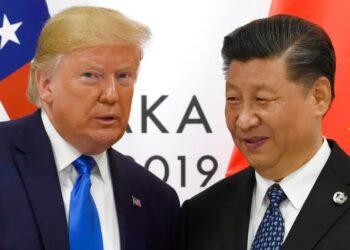June 16, 2017

Wheat production is expected to decrease 6-7 percent this year, endangering the self-sufficiency that was achieved last year.
“This [production decline] will be a result of the decrease in precipitation as well as the Sunn Pest that has infested some rain-fed farms,” Mohammad Ali Baghestani, head of the Plant Protection Organization of Iran, was quoted as by saying by the Mehr News Agency.
Baghestani insisted that hopes are still high that wheat self-sufficiency will be attained this year just like last year.
The Sunn Pest is one of the most serious insect pests attacking wheat and barley in West Asia. Yield loss from its damage is commonly estimated at 20-30 percent in barley and 50-90 percent in wheat.
This insect damages these crops by feeding on leaves, stems and grains. During feeding, they also inject chemicals that greatly reduce the baking quality of flour made from damaged wheat. If just 2-3 percent of the grain is damaged, entire lots may be ruined because the flour will be unpalatable and the bread won’t rise.
A record high of 14 million tons of wheat were domestically produced last year, more than 11.76 million tons of which were purchased by the government from local farmers at guaranteed prices. This helped Iran achieve self-sufficiency in wheat production for the first time in 11 years.
So far this year, 2.8 million tons of wheat have been bought from farmers across the country by the Government Trading Corporation (GTC), said Esmail Esfandiarpour, the executive manager of the government program to buy the crop from farmers at a guaranteed price.
GTC is a government-owned company specializing in the domestic purchase, import and distribution of essential foodstuffs. The company is also in charge of maintaining a stock of wheat, rice, cooking oil and meat, as the country’s strategic reserve of essential commodities.
In 2004, the Khatami Administration loudly proclaimed its success in making Iran self-sufficient in wheat production and the country did not import wheat in 2005. But that self-sufficiency only lasted one year before wheat imports had to be resumed—and such imports continued every year until 2016.
In 2014, the Rohani Administration announced a new goal: reducing its dependence on imported wheat over the following three years. Deputy Agricultural Minister Abbas Keshavarz said that by August 2017, Iran would only be importing 5-10 percent of its wheat needs. But imports actually fell to zero a year earlier.
Keshavarz did not say the Islamic Republic was dropping its ideological goal of self-sufficiency or autarky. But he did not state autarky to be a goal, as previous governments have done, and thus implied the regime was abandoning a goal that most economists see as harmful to Iran.
Furthermore, in a response to the water challenge, Agriculture Minister Mahmud Hojati said in 2015 that the government would shrink the land devoted to wheat cultivation by 900,000 hectares over the next decade and devote that land to crops that require less water. That could be expected to make the country more dependent on wheat imports. What changed to produce self-sufficiency last year has not been explained.
Wheat is the dominant cereal in the country, accounting for almost 70 percent of total cereal production. Irrigated wheat covers only one-third of the total wheat area, thus the bulk of the wheat crop depends on seasonal precipitation. Most of the rain-fed wheat crop is concentrated in the northwest.
A major problem for Iran’s shortage of wheat was the Ahmadi-nejad Administration’s refusal to pay market rate to farmers. As a result, there was a huge industry in shipping wheat to neighboring countries where it often sold for a third more than in Iran. In September 2013, one month after taking office, the Rohani Administration boosted payments to farmers from 8,000 rials per kilo to 10,500, a 31 percent hike that helped to keep more wheat on the domestic market.
In non-drought years, Iran produces up to 14 million tons of wheat and needs about 13 million tons. But drought, which has been the norm in the last decade, has knocked output way down, usually well below 12 million.
As for imports, Iran bought 6 million tons of wheat in 2008, a bad drought year, making it the world’s largest wheat importer that year.
Most years, import quantities are much smaller, but they still made mincemeat of Iran’s proclaimed goal of becoming self-sufficient in wheat production after a half-century of dependency on imports.
Wheat is a very political issue in the Islamic Republic. At the time of the revolution, the Shah was accused of making Iran dependent on imports—and thus dependent on crafty foreigners who might threaten to starve Iran if it didn’t do as they demanded.
So, the revolution pledged to make Iran self-reliant in all major foods. It has failed to that. And that has been a huge embarrassment.
The Islamic Republic is desperate for ideological reasons to end wheat imports, even though economists say that using more land for wheat means there is less land for other agricultural products and Iran must then import those crops.
In 2007, Issa Kalantari, who had been agriculture minister under Khatami, said the Ahmadi-nejad Administration’s drive to make Iran self-sufficient in wheat was cutting the production of potatoes and other foods, driving up their prices and actually requiring more imports.
Kalantari said Ahmadi-nejad’s “obsessive” drive for autarky was self-defeating. He said that as more and more land was diverted to wheat cultivation, the production of cattle feed, cotton, potatoes and other grains suffered.
Mansur Bitaraf, an agricultural economist, told the Financial Times Deutschland, “This [wheat] self-sufficiency drive has been at the cost of other products, like barley, which has lost lands to wheat production. This has indirect impacts on other foods like red meat, because barley is also used as cattle feed.” While the self-sufficiency drive began many years ago and is an ideological lodestar for the revolutionary regime, the Financial Times Deutschland said administrations before Ahmadi-nejad’s “appeared to be pursuing the policy grudgingly” in recognition of the dangers.
But the Ahmadi-nejad Administration set the Agriculture Ministry at full speed ahead on autarky—and not just in wheat.
In 2006, the year after Ahmadi-nejad took office, Agriculture Minister Mohammad-Reza Eskandari said Iran would become self-sufficient in red meat in 2006, in barley in 2007, in maize and rice by 2009, in sugar by 2010, in vegetable oils by 2011. None of that happened.
In January 2006, Supreme Leader Ali Khamenehi pressed farm leaders to make Iran self-sufficient in all foods so the Islamic Republic is not subject to pressure from “bullies.”
“Today, when our country is the subject of ill will and vindictiveness from the bullies of the world,… the country needs to have food security—for its bread, for its daily food, for its cooking oil, for its meat—not to be dependent on other countries, not to be dependent on those who can demand its honor in exchange for these goods.”
Khamenehi said that under the Shah other countries, unnamed, tried to make Iran dependent on them for food in order to have markets for their wheat and other products.
Many agricultural specialists say self-sufficiency in most agricultural fields is not even a reasonable goal for Iran given its frequent droughts and erratic climatic conditions. Economists also almost universally scoff at autarky as an economic principle discredited centuries ago. They stress inter-dependence with countries exporting those goods for which they have a natural advantage and importing those goods for which others have a natural advantage.
As a practical matter, economists say, food embargoes of the type Khamenehi fears are meaningless because too many countries produce food for export; if Country A stops wheat sales to Country Z, then Countries B thru J will swiftly line up to supply Country Z, so that Khamenehi’s horrific vision is not logical.
Despite that, autarky has a popular appeal with citizens in many countries—including the United States, although officials in the United States do not advocate autarky and just brush off its vocal advocates.























